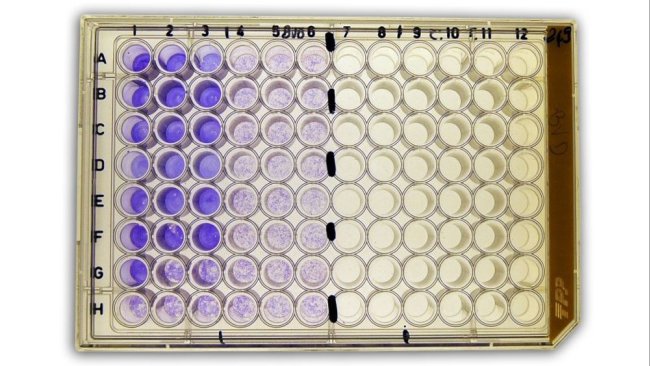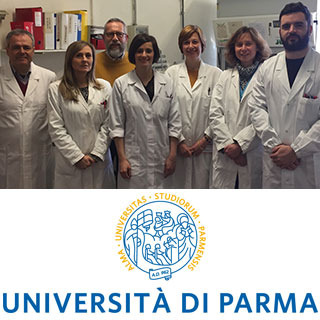
Laboratory techniques to evaluate the antibody immune response in the pig
Enzyme-linked immunosorbent assay, serum virus neutralization test, haemoagglutination test, and immunoperoxidase monolayer assay are explained.
The pig sector events all around the world
Weekly newsletter with all the pig333.com updates
Swine industry news in your email
Pig health: news and articles on PRRS, PCV2, biosecurity, etc, Pig disease guide, atlas of pathology, clinical cases…
Biocheck.UGent is an independent, risk-based, scientific scoring system for assessing the quality of your on-farm biosecurity.
A visual and practical step-by-step guide on how to perform a necropsy on a pig.
All the information about ASF: how to recognize the disease, how it is transmitted, pictures of lesions, latest news, guides, etc.
All the information on Foot and Mouth Disease in pigs: how to recognize the disease, how it is transmitted, images of lesions, latest news, guides,...
Description of the most important diseases and conditions in pigs
Images of major swine diseases
Pig disease diagnostic tool
Definition for the most commonly used pig terms
Simulator that calculates the amount of drug to add to the water when using a flow dispenser.
Weekly newsletter with all the pig333.com updates
Pig Prices by countries. Pork production and trade. News of the pig market and the raw materials
The latest slaughter pig prices in the most important pig markets. Check the evolution of the historical prices in charts and in several currencies.
Latest quotations for the main commodities used in pig feed. Historical graphs with the pig price and estimated feed price.
Figures & trends in pig numbers, pork production and pork trade.
Global production and trade data for the most important raw materials
Weekly newsletter with all the pig333.com updates
Articles on nutrition and pig feeding, characteristics of raw materials and additives for pig feed. Prices of raw materials
Latest quotations for the main commodities used in pig feed. Historical graphs with the pig price and estimated feed price.
Technical sheets of the main raw materials and additives used in swine feed. They include a comparison of nutritional values from various sources, product
Global production and trade data for the most important raw materials
Definition for the most commonly used pig terms
Use this tool to diagnose problems with the feed conversion ratio. Click on the flowchart or on the buttons within the text to navigate through the different parts of the tool.
A biweekly newsletter with the latest developments in swine nutrition
Articles on genetics and pig reproduction: genetic improvement, genomics, artificial insemination, use of hormones
Compare production data, calculate the number of sow, nursery, and finishing spaces, and visualize your tasks on the work schedule by type of BMS.
Tool that allows you to calculate the replacement rate in your farm
Definition for the most commonly used pig terms
Use this tool to find out why your farrowing rate is less than ideal. Click on the flowchart or on the buttons found within the text to navigate through the different parts of the tool.
Weekly newsletter with all the pig333.com updates
Management, pig farm management, work planning in each production stage: management in gestation, grow finish, batch farrowing
Compare production data, calculate the number of sow, nursery, and finishing spaces, and visualize your tasks on the work schedule by type of BMS.
Tool that allows you to calculate the replacement rate in your farm
Definition for the most commonly used pig terms
Weekly newsletter with all the pig333.com updates
Design of facilities and equipment for pig farms: building design, climate control, feeding systems, etc.
Biocheck.UGent is an independent, risk-based, scientific scoring system for assessing the quality of your on-farm biosecurity.
Environmental Footprint Calculator along the pork value chain.
Definition for the most commonly used pig terms
Simulator that calculates the amount of drug to add to the water when using a flow dispenser.
Use this tool to explore which slurry management strategy best fits your situation. Click on the flow chart or on the buttons within the text to navigate through the different parts of the tool.
Weekly newsletter with all the pig333.com updates
What makes us stand out is the quality and independence of our contents. Find out about the authors who make it possible. Our goal is to generate a virtual community of advanced users in the sector.

Research unit of Experimental and Clinical Immunology, Department of Veterinary Science – University of Parma
Prof. Paolo Martelli – DVM – Diplomate ECPHM - Full Professor
Prof. Paolo Borghetti – DVM- PhD – Diplomate ECPHM – Full Professor
Dr. Roberta Saleri – DVM – PhD
Dr. Benedetta Passeri – DVM- PhD
Dr. Elena De Angelis – Biologist – PhD
Dr Luca Ferrari – Biotechnologist – PhD
Dr. Elena Canelli – DVM – PhD – MS Molecular Virology – Resident ECPHM
Dr. Alessia Catella – DVM – PhD student
Dr. Giulia Ogno – Biotechnologist – PhD student
Dr. Valeria Cavalli – Biologist
The research activity is focused on the immune response in both experimental and field trials. Moreover, in vitro immune models and new innovative vaccines and route of administration are also under investigation.
Updated CV 13-Mar-2017

Enzyme-linked immunosorbent assay, serum virus neutralization test, haemoagglutination test, and immunoperoxidase monolayer assay are explained.

Nowadays several laboratory techniques allow to evaluate the cellular immune response.

This article discuss about the protection of the placenta, the colostrum, the immunity conferred by milk and the congenital acquired immunity of the piglet.
 you can find some more information about the correct development of the replacements animals in a recent article published in the site, here https://www.pig333.com/articles/preparing-the-gilt-health-aspects_13429/
you can find some more information about the correct development of the replacements animals in a recent article published in the site, here https://www.pig333.com/articles/preparing-the-gilt-health-aspects_13429/
The immune, endocrine and central nervous systems communicate through anatomical and hormonal-neuropeptides pathways.

The skin is the first defensive line, as is the largest organ of the body.

Mucosal surfaces, constantly exposed to foreign antigens, have developed the ability to protect the host from potentially harmful organisms by means of innate and acquired immune responses.

In the primary humoral immune response, a single class IgM in monomeric form is initially secreted. The secondary response induced by a subsequent exposure to the same antigen will be mainly characterized by the production of IgG isotype but at higher titre and affinity.

Specific humoral immunity is mediated by glycoproteins called antibodies or immunoglobulins.

The main mechanism of defense against intracellular infections, particularly virus.

The role of each player in the innate immunity response: Type 1 Interferons and pro-inflammatory cytokines, complement, acute phase proteins, antimicrobial proteins, phagocytes, NK cells, γ/δ T lymphocytes,...

Recognition of the pathogen is the first step of defensive immune response; both innate and specific immunity have mechanism to recognize the pathogen.

What the cytokines are, what they do and how they work on the immune system.

This article reviews major immune cells: Neutrophils, macrophages, natural killer, lymphocytes, dendritic cells, mast cells...

This article summarizes the primary (thymus and bone marrow) and secondary (lymph nodes, spleen, MALT, tonsils, and skin immune system) lymphoid organs in pig.

This article introduces us to the complex world of porcine immunology.
Welcome to 333
Connect, share, and interact with the largest community of professionals in the swine industry.
Celebrating 195704Users on 333!
Sign upAlready a member?





